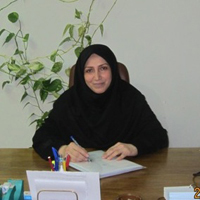Measuring the Spatial Structure of Metropolitan Regions from the Perspective of Economic Synergy Potentials, case study: Tehran Metropolitan Region
Analysis of the spatial structure to recognize the potentials of the metropolitan region, to create competitive regions and more importantly, recognition of hidden or improperly used resources of regions, for economic development and to take advantage of the cooperative advantages of cities to develop economic synergy is crucial. Tehran metropolitan region, like other developing metropolitan regions, faces distinctive challenges such as imbalance, lack of integration, functional cohesion and an unbalanced distribution of the system of activity and housing. But the policy-making process in the field of regional development is affected by economic conditions (rent) and regardless of the space economy in the context of development policies and programs, it has caused this region, despite all the many potentials, to not have a desirable performance in comparison with these potentials. The concentration of economic resources and forces for the metropolitan region, along with economic benefits, has had diverse consequences of environmental (environmental pollution), social and economic (slum, increased housing and household living costs, class conflict and increased Gini coefficient) which we see its spatial reflection in the formation of rent, information and economic rent spaces in the context of the location of economic activities. On the other hand, the lack of attention to the potentials of economic synergy has caused Tehran to become a place with a high concentration of industries and the role of economic factors in the formation of a dynamic place for production becomes less important. However, the high concentration of enterprises, the economies of scale and accumulation are low, and the economics of networking is very low.
The ontology of research is based on critical rationalism. In this ontology, the view of the object is abstract - concrete and deals with the analysis of the problem on three levels: real, actual and empirical. At the real level, it deals with causal forces in creating the spatial structure of the metropolitan region. At the actual level of the mechanisms affecting the spatial structure and at the empirical level, the spatial representation of currents and forces is evaluated. The epistemology of research is based on reason and experience with inductive, deductive and post-exploratory approaches. Research methodology is mixed (quantitative-qualitative). The method is the utilization of procedures for measuring spatial structure and analysis of flows and connections, as well as methods for measuring the degree of diversity and specialization have been used.
In the morphological dimension, the spatial distribution of the population system indicates that the metropolitan region has a weak tendency to become morphological polycentric over time. In the functional dimension, network power, dominance and symmetry were evaluated based on the flow of travel production. According to the amount of entropy that shows the power of the network, the tendency of the metropolitan area is towards functional polycentric. In addition to the Dii measure that shows dominance in relationships and its value is from zero to infinity. It indicates that in terms of travel production (movement of people) Tehran and Karaj are significantly different from other cities. In other words, these two cities have complete control over the network of relations. But in terms of symmetry, the spatial structure of the metropolitan region is not polycentric. The study of the flow of goods between the cities of the metropolitan region shows that in 2006 the main flows of communication between the cities of the metropolitan region were with Tehran and relations with each other at the level of medium-sized cities have been weak. But in 2016, also the formation of two-side relations between some cities with Tehran (Firoozkooh, Bumhan, Robat Karim, Eshtehard, Karaj and Hashtgerd), witnessed a tendency to form horizontal relations between other cities (Karaj-Eshtehard, Hashtgerd-Karaj, Shahriyar-Eshtehard, Shahriyar-Karaj, Pakdasht-Karaj, Firoozkooh-Damavand, Qarchak-Meshkin Dasht). Therefore, it can be said that the vertical and hierarchical relations of the flow of goods, between the cities of the metropolitan region and Tehran, have a very weak tendency from vertical relations to horizontal relations. The study of economic indicators shows that the degree of specialization of the cities of the metropolitan area is increasing. Although Tehran's level of specialization has decreased, it still has the highest level of specialization. However, this diversity has decreased during this period. On the other hand, Savojbolagh, Rey, Baharestan, Karaj, Quds, Mallard and Eshtehard cities had the highest level of diversity in production structure during the period of -75 to 95.
The results show that the spatial structure in the morphological dimension is a monocentric spatial structure that tends to become polycentric. In the functional dimension, the study of spatial interactions shows that the relations between the cities of the region have very little tendency towards networking but in terms of dominance, Tehran and Karaj still dominate these relations. On the other hand, the study of network symmetry also indicates asymmetry inflows. In addition, the study of the flow of goods in the metropolitan region shows that the vertical relations between cities and the metropolis of Tehran are still maintained and other cities have been added to this relationship over time. But the new point in these relations is the formation of two-side commodity relations between some cities and the metropolis of Tehran and the tendency to form a horizontal relationship between some cities in the metropolitan region. The role of cities such as Hashtgerd, Eshtehard, Shahriyar and Firoozkooh, and secondarily the cities such as Robat Karim, Hassanabad, Varamin, Pakdasht and Damavand, shows the tendency to create weak functional centres in the metropolitan region. Therefore, it can be said that the spatial structure of Tehran metropolitan region has a weak tendency towards the spatial structure with the ability to support synergistic relations between cities in the metropolitan region.
- حق عضویت دریافتی صرف حمایت از نشریات عضو و نگهداری، تکمیل و توسعه مگیران میشود.
- پرداخت حق اشتراک و دانلود مقالات اجازه بازنشر آن در سایر رسانههای چاپی و دیجیتال را به کاربر نمیدهد.


